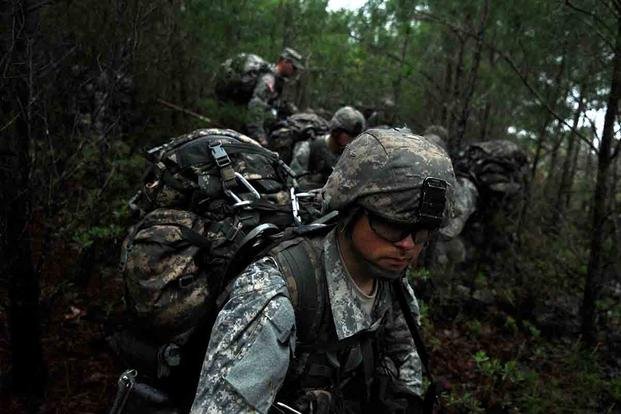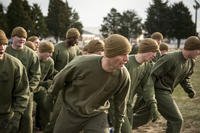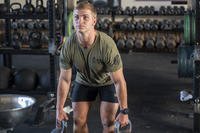Future soldiers want to know whether they should prepare for the two-mile Army Physical Fitness Test timed run, the Ranger five-mile timed run or rucking 6-12 miles.
The short answer is: All of the above.
If you are considering becoming an Army Ranger, your journey not only means you have to do the above fitness tests, but you will also include pull-ups and take the new Army Combat Fitness Test. You are wrong if you think you can get by on your athletic history without specifically preparing for all of the fitness tests in your path to becoming an Army Ranger.
Preparing for this journey requires significant time during your daily workouts because rucking takes time, but building the necessary strength, endurance and durability over a training year is important.
Consider the following progression:
1. Army PFT Plus Pull-ups
The Airborne Fitness Test is required and adds pull-ups into the classic Army Physical Fitness Test (PFT) of push-ups, sit-ups and a two-mile timed run. Build your endurance and muscle stamina by focusing on these calisthenics and cardio events for a six- to 12-week cycle until you progress to competitive scores in the 80 push-ups, 80 sit-ups, 10-20 pull-ups and 12- to 13-minute, two-mile timed run zone.
These scores are my recommendation, not the Army's. See Army PFT/CFT Workout and rucking progression training programs for ideas.
2. Start Rucking and Build Up to Longer Runs
Any time you start on a running and rucking program, logical progressions and not getting injured by doing too much, too soon are the keys to success. Start doing longer training events after you have developed your baseline from a month or so of the above calisthenics and cardio focus.
Then, on weekends, add in a longer ruck at a 15-minute mile pace and see how long you can maintain that pace with a 25- to 35-pound backpack. You may find that getting your longer run and ruck done on the weekend works well for typical scheduling issues during the week.
The five-mile run at a 7-7:30 pace is no joke. It requires practice. The same goes for the six- and 12-mile timed ruck. Learning how to power-walk a sub-15-minute mile is the minimum standard. Being faster than that will put you in good stead with the top of the class.
3. Time to Add Lifting, Power, Speed and Agility
After a few months of the above training focus, add a cycle that involves the lifting, sprinting and power events of the Army Combat Fitness Test. You will see this test and the OPAT (Occupational Physical Assessment Test).
4. Assess Yourself Regularly
You know the tests you will see in your future. It is wise to practice regularly to develop strategies, fuel practices and learn how to take the test. If you are not assessing, you are merely guessing. This will limit your chances of joining the Army Ranger program.
You will see the Army PFT, OPAT and the ACFT during the recruit and Basic Combat Training phase of your training. The ACFT may also be part of Advanced Individual Training (AIT). After your basic and advanced training, you will be part of the Ranger Assessment and Selection Program (RASP), but there is a pre-training phase:
Pre-RASP is where you will see the Army PFT, pull-ups and a six-mile ruck for time. Once meeting the standards in pre-RASP, the soldier will be enrolled in RASP and be subject to various tests, including the Ranger PFT (with the five-mile run), plus a 12-mile ruck and other tactical and psychological tests. Land navigation and medical first responder training and testing are challenging events of Phase 1 of selection.
Phase 2 of RASP will include more tactical training and physical challenges. Marksmanship, small unit tactics, explosives/breaching and other tactical skills are taught at a high rate. Quickly learning and applying new skills is another capacity that will be tested on your way to joining the Ranger Regiment as a tan beret-wearing Ranger.
Once you are in the regiment, you will be expected to attend and graduate from Ranger School and become tabbed (shoulder patch) with the Ranger tab. By the time you get to this accomplishment, you will have completed nearly two years of training that saw you progress from civilian to soldier, soldier to infantry soldier, infantry soldier to Airborne-qualified Ranger student, to a Ranger in an operational unit with a Ranger tab.
Stew Smith is a former Navy SEAL and fitness author certified as a Strength and Conditioning Specialist (CSCS) with the National Strength and Conditioning Association. Visit his Fitness eBook store if you're looking to start a workout program to create a healthy lifestyle. Send your fitness questions to stew@stewsmith.com.
Want to Learn More About Military Life?
Whether you're thinking of joining the military, looking for fitness and basic training tips, or keeping up with military life and benefits, Military.com has you covered. Subscribe to Military.com to have military news, updates and resources delivered directly to your inbox.


















